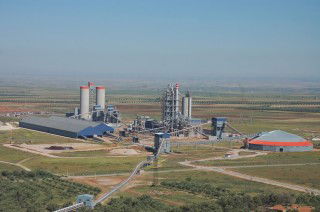Ethiopia has become one of the fastest-growing African economies in recent years. The cement sector has also made significant strides in terms putting an end to its reliance on imports and satisfying local demand. The industry is also set to be a key beneficiary of the government’s Growth and Transfomation Plan which aims to take demand to a higher level. Shimelis Wolde Biru, Ministry of Industry, Ethiopia, reports on the progress in the North African country.
Located in the Horn of Africa, Ethiopia is bordered to the north and northeast by Eritrea, to the east by Djibouti and Somalia, south by Kenya, west and northwest by Sudan and southwest by South Sudan. With a population of 84m, Ethiopia is Africa’s second-most populous nation.
The local economy has been undergoing a transitional phase and in fiscal 2003-04, began a higher growth trajectory which is still being maintained. Between FY05-06 to FY09-10, overall real GDP grew rapidly at an average rate of 11 per cent per annum and double-digit economic growth continues to be recorded. This positive growth path places the country among the fastest-growing economies in the world. Indeed, in 2010 Ethiopia proved to be the second-fastest growing economy in sub-Saharan Africa (after the Republic of Congo), according to the Global Economic Prospects report published by the World Bank last year.
In terms of performance by sector, over the 2005-10 period agriculture, industry and services registered an annual growth rate of 8.4, 10 and 14.6 per cent, respectively. Their share of real GDP in 2009-10 accounted for 41.6, 12.9 and 45.5 per cent, respectively.
Construction sector & major cement demand drivers
Construction has emerged as one of the most rapidly-expanding sectors in Ethiopia. This in turn, has been steering cement demand together with the fast-expanding economy, population growth of 2.6 per cent per annum and higher urbanisation rates. As such, the housing sector has acted as the principal driver of cement demand growth to meet growing housing needs. For example, major cities – especially the capital Addis Ababa – have been undertaking massive construction and housing development programmes, and these are set to continue for the next 5-10 years. In terms of the private sector, real estate developers have also played a part in raising consumption levels.
Aside from housing, the industrial and infrastructure sectors have emerged as key stimuli for cement consumption. Construction, rehabilitation and the upgrade of Ethiopia’s roads is a key priority for the government. The length of the road network is being extended from 50,000km at present to over 130,000km over the next five years. In addition, the government has also launched a project for the construction of a 5000km railway. Furthermore, trends in the building of hospitals, universities, hotels and other public services are also spurring demand. The conducive investment policy in the country has attracted many local and foreign investors to the agriculture, manufacturing, real estate, hotels and health sectors.
Urbanisation has also led to increased power consumption in Ethiopia and with domestic generation capacity only 2000MW, the government is keen to raise this figure to 10,000MW and 20,000MW in the next five and 10 years, respectively. Hydropower schemes are a top priority as the country aims to become a major African power hub. The government has recently launched the multibillion-dollar Great Millennium Dam that will span a section of the Blue Nile River in the country’s Benishangul-Gumuz region. With a generating capacity of 5250MW, the bulk of the generated electricity will be exported to neighbouring countries. Due for completion in 2017, cement demand for its construction over the next five years will be significant. Aside from hydropower, the government is also allocating a significant part of its budget to the wind, solar and geothermal power generation projects to exploit renewable energy potential.
